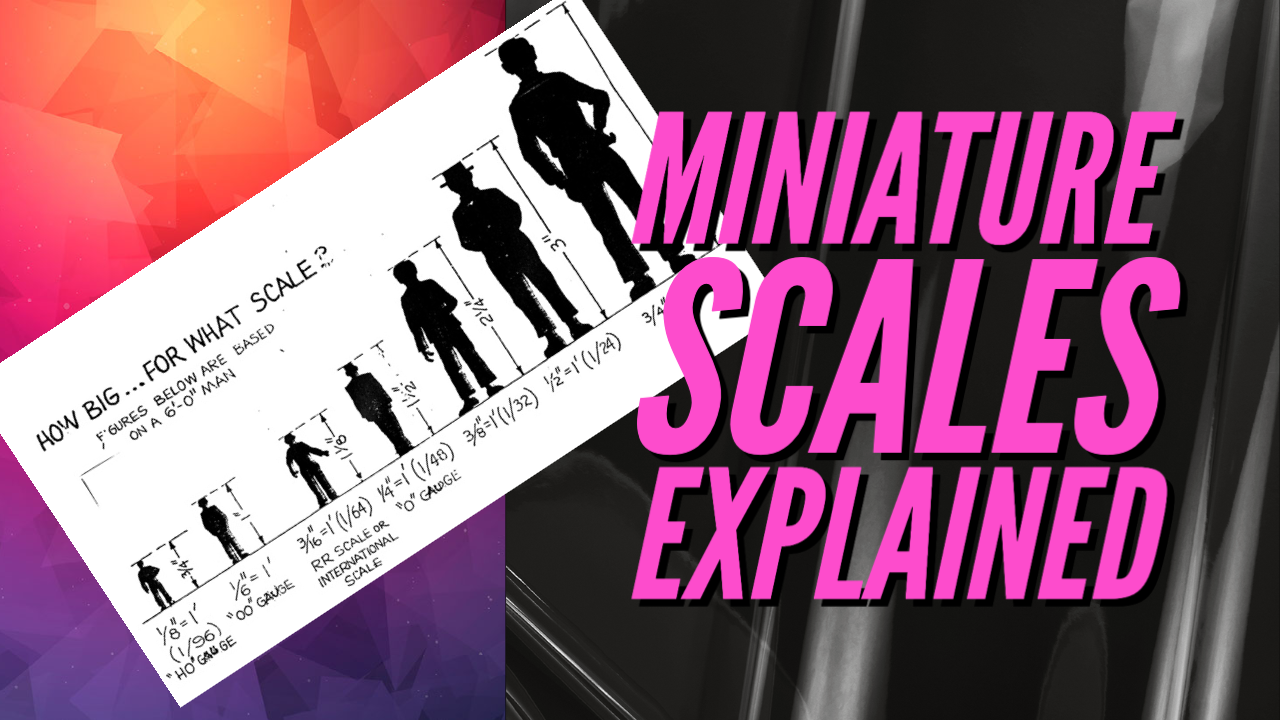Scale models are found not only in many different scales but also many different types of scale. For example a popular scale for plastic models is 1/72 whereas a popular scale for model trains is HO scale and miniatures may be 28mm. These can be very confusing. Let us try to clarify in the simplest terms possible.
Relative Scale
Scale defines the ratio between a full size object and a miniature representation of that object.
The easiest way to think about this is to consider that 1/1 would mean full size meaning one inch on the model equals one inch on the original. Then 1/2 scale means that the miniature is one half the size of the original, therefore one inch on the model is represented by two inches on the original. Thus 1/4 scale means the miniature is one quarter the size of the original, an inch on the model equals four inches on the original. Following this logic 1/48 (the popular aircraft model scale) means that the model is one forty-eighth of the size of the original an inch on this model represents 48 inches on the original. This is referred to as Relative Scale.
There may be some variance when it comes to representing humans, animals and trees etc. Humans are not all the same size so a set of figures in 1/35 scale may vary slightly in size as a group of humans would.

Picture Source - Finescale.com
Absolute Scale
This simply describes the average size of a miniature, normally figures, in millimetres.
For example, if a group of miniatures are described as being 28mm scale, it means that's the average height of those minis. One may be 28mm, the other may be 29mm and another 27mm just as different humans differ in height. Also bear in mind that some may be slouching, kneeling or seated so the absolute scale can vary significantly.
However to confuse matters for us, they are measured differently, depending on the manufacturer. Some manufacturers measure from foot to eye-line height normally referred to as 28mm minis. Others are measured from foot to top of head these are 32mm minis. Both of these are roughly 1/56 scale in relative terms, therefore they can be matched with vehicles of that scale. Also normally the base on which the model stands is not taken into account for scale measurement.
Model Train Scales

Picture Source - Finescale.com
Here things become even more confusing. There are many different train scales, they are based on the gauge of the tracks that they run on. The most popular ones are as follows:
Real world trains track sizes:
1,435 mm standard-gauge tracks: Used in Europe, North America, Australia, China, and some other places.
1,520 mm Russian gauge tracks: Used in Russia.
1,067 mm gauge tracks: Used in Japanese private railways.
Scale model Equivalents:
N Scale: 9mm distance between tracks (N stands for Nine). This is 1/60 scale for 1,435 mm standard-gauge train tracks.
HO Scale: 16,5 mm distance between tracks. This is 1/87 scale for 1, 435 mm standard-gauge tracks.
A question often asked about HO Scale - Is it the same as 1/72? No, actually its somewhere between 1/72 and 1/90 but closer to 1/90.
There are many other scales and variations upon these scales but if you understand the above, you've got the basics. If you want to learn more, there is an excellent article on the Fine Scale Modeler website which you can read here.

